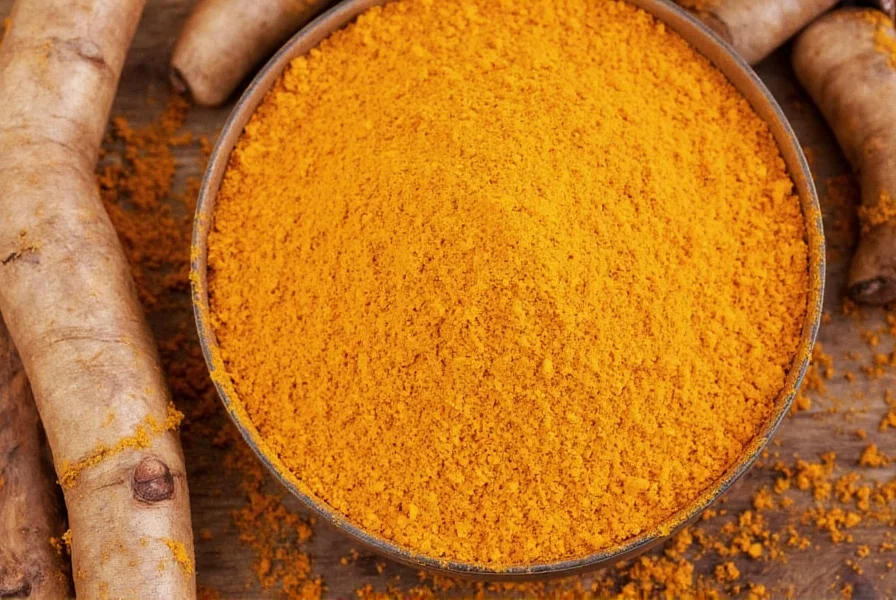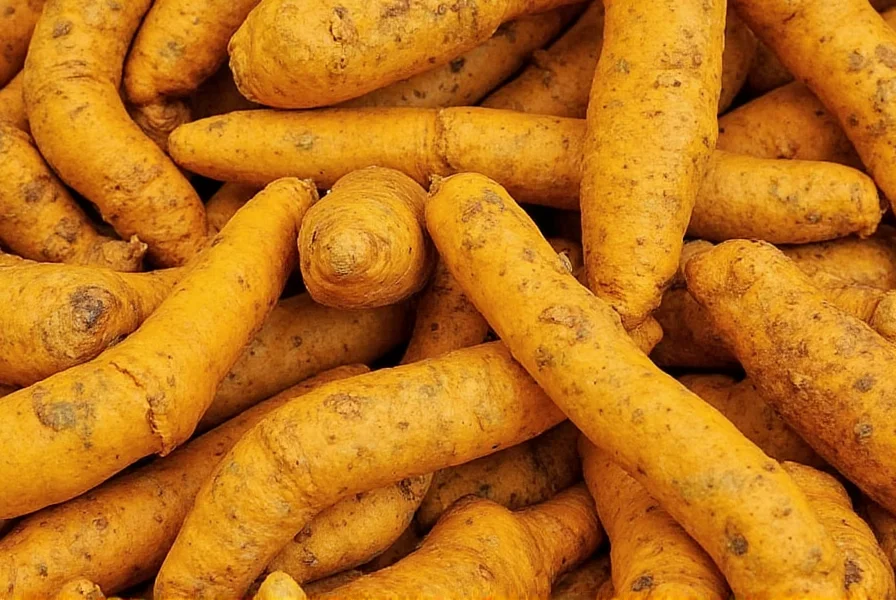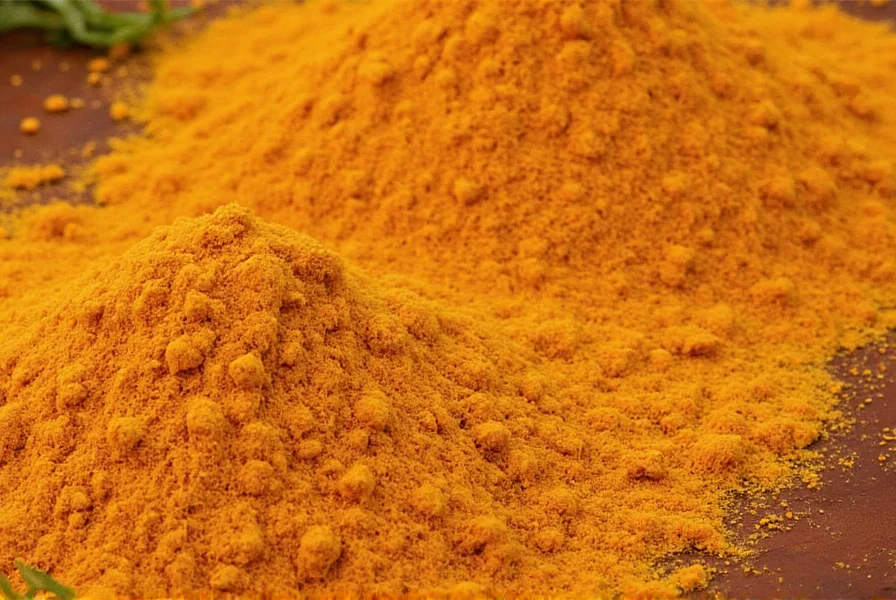India produces and consumes approximately 80% of the world's turmeric, making it deeply woven into the country's culinary identity. The golden spice appears in nearly every savory Indian dish, from comforting dals to complex meat curries, providing both color and earthy flavor. Beyond the kitchen, turmeric holds significant cultural importance—applied in wedding ceremonies as a paste for brides and grooms, used in religious offerings, and incorporated into traditional healing practices.
The Culinary Role of Turmeric in Indian Cooking
Indian cooks rely on turmeric as a foundational spice rather than a mere seasoning. Unlike many Western applications where turmeric might be used sparingly, Indian recipes typically include it in nearly every savory preparation. The spice works synergistically with other ingredients common in Indian cuisine:
| Indian Dish Category | Typical Turmeric Usage | Complementary Spices |
|---|---|---|
| Dals (lentil dishes) | 1/2-1 tsp per cup of lentils | Cumin, asafoetida, mustard seeds |
| Vegetable curries | 1 tsp per serving | Coriander, cumin, fenugreek |
| Meat curries | 1-2 tsp per pound of meat | Ginger, garlic, cardamom, cloves |
| Rice dishes | 1/2 tsp per cup of rice | Saffron, cinnamon, bay leaves |
Chefs typically add turmeric early in the cooking process to allow its flavor to mellow and integrate with other spices. Many Indian cooks follow the "tadka" technique—blooming turmeric in hot oil with other whole spices before adding liquid ingredients. This method maximizes flavor extraction and increases curcumin bioavailability when combined with black pepper and healthy fats.

Cultural Significance Across India
Turmeric's importance extends far beyond Indian kitchens. In Hindu traditions, the spice symbolizes purity, prosperity, and fertility. The pre-wedding "haldi" ceremony involves applying turmeric paste to the bride and groom's skin to bless them and enhance their beauty. Many Indian households maintain the practice of applying a turmeric paste to doorways during festivals for purification.
Regional variations showcase turmeric's versatility across India:
- In South India, fresh turmeric leaves wrap rice dishes for cooking
- West Bengal uses turmeric prominently in fish preparations
- Punjab incorporates it into dairy-based dishes like paneer
- Kerala combines turmeric with coconut in medicinal preparations
Turmeric in Ayurvedic Medicine
Ayurveda, India's traditional medical system dating back 5,000 years, classifies turmeric as having heating energy with a bitter-pungent taste. Practitioners use it for various purposes:
- Digestive health: Mixed with warm milk or water to support digestion
- Skin conditions: Applied topically as a paste for inflammation
- Respiratory support: Combined with black pepper and honey
- Joint health: Incorporated into massage oils with sesame oil
Traditional Ayurvedic preparations often combine turmeric with specific ingredients to enhance absorption. The classic "golden milk" recipe mixes turmeric with warm milk, black pepper, and ghee—a combination modern science confirms increases curcumin bioavailability by up to 2000%.
Indian Turmeric Varieties and Quality
India produces several distinctive turmeric varieties, each with unique properties:
- Alleppey Finger (Kerala): Highest curcumin content (4-7%), vibrant color
- Madras Turmeric (Tamil Nadu): Balanced flavor profile, moderate curcumin
- Sangli Turmeric (Maharashtra): Strong aroma, medium color strength
- Erode Turmeric (Tamil Nadu): High essential oil content
Authentic Indian turmeric typically contains 3-5% curcumin, significantly higher than many international varieties. Consumers can identify quality Indian turmeric by its deep orange-yellow color (not bright yellow, which may indicate additives) and earthy aroma. Traditional Indian markets often sell fresh turmeric root, which many households prefer for daily use due to superior flavor and potency.

Modern Research on Traditional Uses
Contemporary scientific research increasingly validates traditional Indian uses of turmeric. Studies confirm that curcumin, turmeric's active compound, demonstrates:
- Anti-inflammatory properties comparable to some pharmaceuticals
- Potential cognitive benefits when consumed regularly
- Antioxidant capacity exceeding many common foods
- Support for healthy digestion and metabolism
Researchers note that traditional Indian preparation methods—combining turmeric with black pepper and healthy fats—significantly enhance its bioavailability. This explains why populations consuming turmeric as part of traditional Indian diets may experience greater health benefits than those taking isolated supplements.
Practical Tips for Using Turmeric in Indian Style
For authentic Indian turmeric usage, consider these techniques:
- Always pair with black pepper: Just 1/20th teaspoon of black pepper increases curcumin absorption dramatically
- Use healthy fats: Cook turmeric in ghee, coconut oil, or sesame oil to enhance bioavailability
- Add early in cooking: Incorporate turmeric at the beginning of the cooking process for maximum flavor integration
- Store properly: Keep powdered turmeric in an airtight container away from light to preserve potency
- Consider fresh root: Grate fresh turmeric root for dishes where color and flavor are paramount
When preparing traditional Indian dishes, remember that turmeric should complement rather than dominate—its role is to enhance other flavors while providing subtle earthiness and golden color. Authentic Indian recipes rarely use turmeric alone but rather as part of complex spice blends where it harmonizes with other ingredients.
Frequently Asked Questions
What makes Indian turmeric different from other varieties?
Indian turmeric varieties typically contain higher curcumin levels (3-7%) compared to many international varieties. Regions like Alleppey in Kerala produce turmeric with up to 7% curcumin content. Authentic Indian turmeric has a deeper orange-yellow color rather than bright yellow, and traditional Indian preparation methods—using fresh root or freshly ground powder—preserve more volatile compounds that contribute to both flavor and health benefits.
How do Indians traditionally consume turmeric for health benefits?
Traditional Indian practices include mixing turmeric with warm milk (golden milk), combining it with black pepper and ghee in cooking, applying turmeric paste topically for skin conditions, and using it in herbal preparations with other Ayurvedic ingredients. The key to traditional consumption is combining turmeric with black pepper (for piperine) and healthy fats (like ghee or coconut oil), which significantly increases curcumin absorption—a practice now validated by modern science.
Why is turmeric so prevalent in Indian cooking compared to other cuisines?
Turmeric has been cultivated in India for over 4,000 years, making it deeply integrated into culinary traditions. Its prevalence stems from multiple factors: availability as a native crop, antimicrobial properties that help preserve food in warm climates, vibrant color that enhances visual appeal, and compatibility with other spices in complex flavor profiles. Unlike many Western cuisines that use turmeric sparingly, Indian cooking incorporates it as a foundational ingredient that works synergistically with other spices rather than standing alone.
What are the most common traditional Indian dishes featuring turmeric?
Nearly all Indian savory dishes contain turmeric, but it features prominently in dals (lentil dishes), vegetable curries like aloo gobi, meat preparations such as butter chicken, rice dishes including biryani, and yogurt-based marinades. Specific regional specialties include Kerala's turmeric-rice wrapped in leaves, Bengali fish curry with turmeric, and Punjabi paneer dishes. Traditional Indian pickles also use turmeric both for flavor and preservation.











 浙公网安备
33010002000092号
浙公网安备
33010002000092号 浙B2-20120091-4
浙B2-20120091-4